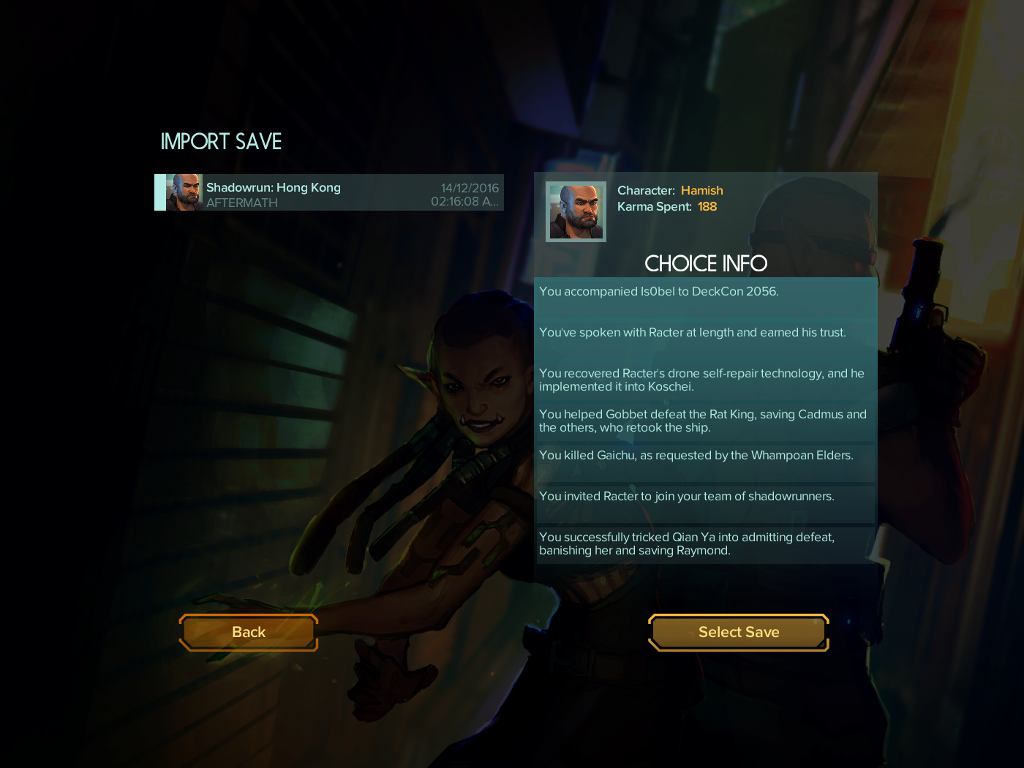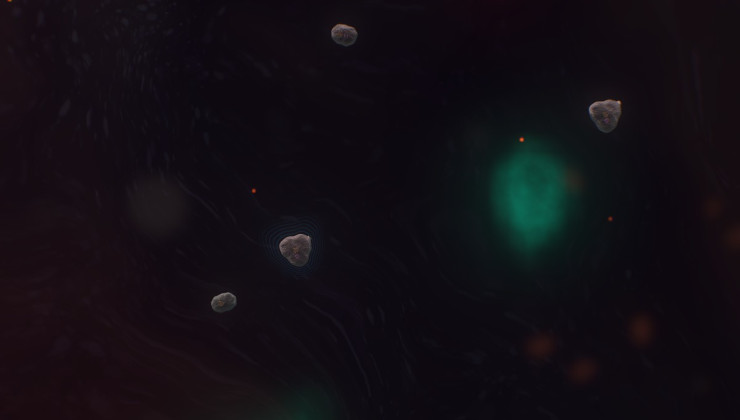Weblinks: Official Website, Steam, GOG.com
Throughout my life I have had several dalliances with CRPGs but rarely found any that I could settle with. I admired the artistry and depth found in Spiderweb Software and Basilisk Games titles, but I was never able to get engrossed in any of them. Dungeons of Dredmor wormed its way into my heart, but I have yet to be as enchanted by another roguelike. I was able to grind through more action oriented variants such as Torchlight, but they always left me feeling burnt out and cold.
I wanted to find at least one larger role-playing series I could get down with, and it was with this in mind that I purchased Shadowrun Returns in September of 2015. It then sat in my back catalogue for over a year. First funded on Kickstarter in 2012, Shadowrun was one of the more high profile titles to be sold on GOG.com as part of their initial Linux offerings. Having some time free after my seasonal bee job and being in desperate need to unwind, I decided to give the game a try.
Shadowrun Returns is a successor of sorts to a couple of RPGs released for 16-bit consoles, which were themselves based on the original Shadowrun tabletop games that first came out in the late 1980s. As such it is set in an already well defined universe with cyberpunk that is so William Gibson that BBS remains popular right into the 2050s. The premise is built around an event known as “The Awakening” wherein magic returned to a world already deviated from our own by advanced technology.
Rather than focusing too heavily on this setting though, all of the Shadowrun games instead try to explore the very personal stories of a group of people called Shadowrunners, mercenaries doing their best to navigate the chaos by taking on the sort of odd jobs that others shy from. It is in this that Shadowrun can stand out, as by having you get involved in the intimate details of its settings and characters a deeper connection is formed than if you were simply playing as an amoral operator.
I decided early on to make a conscious effort to be the "good guy" in any given situation, often taking the more challenging route if I thought it would give me the happier outcome. It is this kind of discipline that an effective role-playing experience thrives on, as by setting rules for myself it gave the game narrative something coherent to latch onto. By sticking to a certain path additional branches opened up, which resulted in a more satisfying ending for the main campaign.
This same strategy also saw me through the two followup games Shadowrun: Dragonfall and Shadowrun: Hong Kong, both of which were released as additional standalone titles featuring unique content. Gameplay consists of conventional skills levelling as well as turn-based tactical encounters, having you take control of a selected team of Shadowrunners against an assortment of enemy units which vary based on the mission you are performing.
Three essential archetypes exist for character creation. Street Samurai and Physical Adepts bear the brunt of combat, Mages and Shamans provide magical support, while Riggers and Deckers control drones and jack into the Matrix respectively. The Matrix is an abstract representation of computer networks, which are again navigated through tactical turn-based combat, although in Hong Kong there is an added puzzle element, even if it does mostly just consist of a game of Simon.
I played as essentially the same Street Samurai character in each game, but no matter what you choose you will still need to create a balanced team containing at least one of each archetype before starting a mission. My aversion to decking, for instance, caused me to be unable to perform certain tasks with desirable ends on certain missions, although the game will force your hand if a certain character class is needed in order to advance the game.
Narrative is relayed to the player through the use of extensive dialogue trees and long streams of text, while the game world itself is made up of hand painted backdrops overlaid with 3D objects and characters. The result is a far more thoughtful experience than what at first might be anticipated, with your own imagination still being called upon to fill in the gaps left by this minimalist approach, something that also helps bring the games that much closer to their tabletop roots.
In “Dead Man’s Switch”, the main campaign of Shadowrun Returns, the story takes the form of a noir detective mystery, while in “Dragonfall” the struggles of a team of Shadowrunners are chronicled living in the Kreusbazar of anarchist flux state Berlin. All three of the games explore class and racial divides through the eyes of their magically segregated characters, using them as convenient analogues for real world political conflicts and prejudices.
“Hong Kong” is by far the murkiest campaign, both in terms of writing and tone, and it may be for this reason that it was my least favourite. There is very limited room for growth when you are working for a cruel crime lord, and I also could not help but notice the amount of copy editing mistakes increased sharply with this release. After playing all three games in a row though, I am sure that some of my coldness here could just be ascribed to player fatigue.
Still, the fact remains that Shadowrun was not only the first CRPG series I found compelling enough to play through all the way to the end, but one that I also found myself invested in enough to purchase additional instalments soon after playing the first. With this experience under my belt I might finally be able to dive into a genre which has always existed on the periphery for me without any real accessible point of entry. Shadowrun gave me that, and for that I am grateful.
I played a bit of the pen and paper RPG but what I'm really looking forward is the Battletech game which I'm a big fan of.
















See more from me